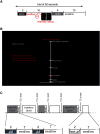Identification of an Amygdala-Thalamic Circuit That Acts as a Central Gain Mechanism in Taste Perceptions
- PMID: 32371606
- PMCID: PMC7314406
- DOI: 10.1523/JNEUROSCI.2618-19.2020
Identification of an Amygdala-Thalamic Circuit That Acts as a Central Gain Mechanism in Taste Perceptions
Abstract
Peripheral sources of individual variation in taste intensity perception have been well described. The existence of a central source has been proposed but remains unexplored. Here we used functional magnetic resonance imaging in healthy human participants (20 women, 8 men) to evaluate the hypothesis that the amygdala exerts an inhibitory influence that affects the "gain" of the gustatory system during tasting. Consistent with the existence of a central gain mechanism (CGM), we found that central amygdala response was correlated with mean intensity ratings across multiple tastants. In addition, psychophysiological and dynamic causal modeling analyses revealed that the connection strength between inhibitory outputs from amygdala to medial dorsal and ventral posterior medial thalamus predicted individual differences in responsiveness to taste stimulation. These results imply that inhibitory inputs from the amygdala to the thalamus act as a CGM that influences taste intensity perception.SIGNIFICANCE STATEMENT Whether central circuits contribute to individual variation in taste intensity perception is unknown. Here we used functional magnetic resonance imaging in healthy human participants to identify an amygdala-thalamic circuit where network dynamics and connectivity strengths during tasting predict individual variation in taste intensity ratings. This finding implies that individual differences in taste intensity perception do not arise solely from variation in peripheral gustatory factors.
Keywords: amygdala; fMRI; gustation; perception; taste intensity; thalamus.
Copyright © 2020 the authors.
Figures





Comment in
-
Inhibitory Central Amygdala Outputs to Thalamus Control the Gain of Taste Perception.J Neurosci. 2020 Nov 25;40(48):9166-9168. doi: 10.1523/JNEUROSCI.1833-20.2020. J Neurosci. 2020. PMID: 33239436 Free PMC article. No abstract available.
Similar articles
-
Taste intensity modulates effective connectivity from the insular cortex to the thalamus in humans.Neuroimage. 2016 Jul 15;135:214-22. doi: 10.1016/j.neuroimage.2016.04.057. Epub 2016 Apr 29. Neuroimage. 2016. PMID: 27132544
-
State Dependency of Chemosensory Coding in the Gustatory Thalamus (VPMpc) of Alert Rats.J Neurosci. 2015 Nov 25;35(47):15479-91. doi: 10.1523/JNEUROSCI.0839-15.2015. J Neurosci. 2015. PMID: 26609147 Free PMC article.
-
Pathways for fear perception: modulation of amygdala activity by thalamo-cortical systems.Neuroimage. 2005 May 15;26(1):141-8. doi: 10.1016/j.neuroimage.2005.01.049. Neuroimage. 2005. PMID: 15862214
-
Flavor is in the brain.Physiol Behav. 2012 Nov 5;107(4):540-52. doi: 10.1016/j.physbeh.2012.04.011. Epub 2012 Apr 17. Physiol Behav. 2012. PMID: 22542991 Review.
-
Gustatory processing is dynamic and distributed.Curr Opin Neurobiol. 2002 Aug;12(4):448-54. doi: 10.1016/s0959-4388(02)00341-0. Curr Opin Neurobiol. 2002. PMID: 12139994 Review.
Cited by
-
Future Directions for Chemosensory Connectomes: Best Practices and Specific Challenges.Front Syst Neurosci. 2022 May 30;16:885304. doi: 10.3389/fnsys.2022.885304. eCollection 2022. Front Syst Neurosci. 2022. PMID: 35707745 Free PMC article.
-
Acute and chronic alcohol modulation of extended amygdala calcium dynamics.Alcohol. 2024 May;116:53-64. doi: 10.1016/j.alcohol.2024.02.004. Epub 2024 Feb 27. Alcohol. 2024. PMID: 38423261 Free PMC article.
-
The influence of the subcortex and brain stem on overeating: How advances in functional neuroimaging can be applied to expand neurobiological models to beyond the cortex.Rev Endocr Metab Disord. 2022 Aug;23(4):719-731. doi: 10.1007/s11154-022-09720-1. Epub 2022 Apr 5. Rev Endocr Metab Disord. 2022. PMID: 35380355 Free PMC article. Review.
-
Functional Connectivity of the Chemosenses: A Review.Front Syst Neurosci. 2022 Jun 22;16:865929. doi: 10.3389/fnsys.2022.865929. eCollection 2022. Front Syst Neurosci. 2022. PMID: 35813269 Free PMC article. Review.
-
From receptors to the brain: Psychophysical clues to taste physiology.Curr Opin Physiol. 2021 Apr;20:154-158. doi: 10.1016/j.cophys.2020.12.010. Epub 2021 Jan 19. Curr Opin Physiol. 2021. PMID: 33585729 Free PMC article.
References
Publication types
MeSH terms
Grants and funding
LinkOut - more resources
Full Text Sources
Medical
